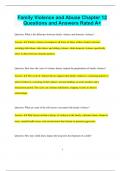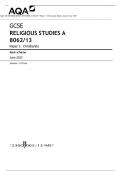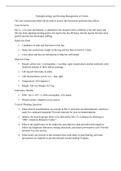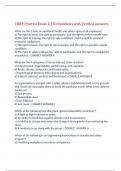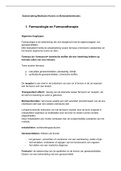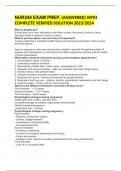Exam (elaborations)
Family Violence and Abuse Chapter 12 Questions and Answers Rated A+
- Course
- Institution
Family Violence and Abuse Chapter 12 Questions and Answers Rated A+ Question: What is the difference between family violence and domestic violence? Answer: Family violence encompasses all forms of abuse within a family structure, including child abuse, elder abuse, and sibling violence, whil...
[Show more]
